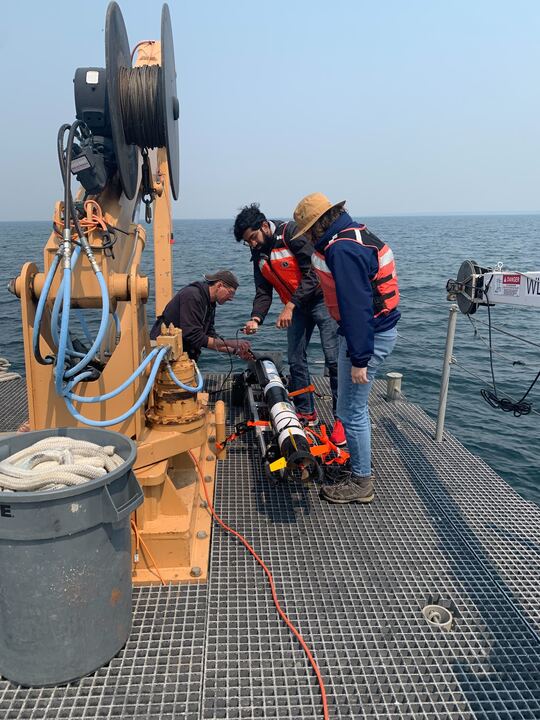Anja Sheppard is a Ph.D. candidate in the Robotics Department in the College of Engineering at The University of Michigan. Anja is a member of the Field Robotics Group, a research lab led by Dr. Katie Skinner at the University of Michigan. Their research spans robotics, computer vision, and machine learning with a focus on enabling autonomy in dynamic, unstructured, or remote environments across field of robotics applications. She deposited her data set entitled "Machine Learning for Shipwreck Segmentation from Side Scan Sonar Imagery: Dataset and Benchmark" in Deep Blue Data. In this interview, she describes her research and why she decided to share her data set publicly.
What prompted you to conduct your research in this area?
The Thunder Bay National Marine Sanctuary, found in Lake Huron, contains hundreds of shipwrecks from a time where navigation around the Great Lakes was a treacherous but necessary business. For decades, archaeologists have conducted diver surveys of these sites, spending countless hours searching the lakebed for signs of a wreck. With the advancement of machine learning and computer vision techniques, we hope to use marine robots to reduce the hours spent searching for new shipwrecks in Lake Huron.
For those not familiar with your field, what is the one thing you think is most important, interesting to know, or unique about your work or your findings?
Collecting these images is a time-consuming and expensive process. We have spent 5 weeks in the field collecting this data. Once the data is collected, identifying and labeling shipwreck sites is a manual task and can take hours or days to complete. With state-of-the-art machine learning methods, we can reduce data processing time to several minutes to output pixel-wise labels of detected shipwrecks. This means we can even process data on the boat while we are in the field. This shows the power and potential of machine learning to accelerate archaeological discoveries.

Anja and collaborators preparing their sonar instrument to be deployed in Lake Huron.
How do you hope your data might be encountered or reused out in the world?
This is a very unique dataset--there are not a lot of sources of sidescan sonar images of shipwrecks, and our dataset also provides pixel-wise labeling for each image. This makes it a unique and interesting dataset for testing novel machine learning methods for object identification or anomaly detection algorithms.
What is one thing you learned during the process of preparing your data for deposit or sharing?
Creating datasets for machine learning is very labor-intensive. For an object identification task such as shipwreck segmentation, each pixel must be individually labeled. Behind the important datasets being used in the industry right now are teams of many people working to create and maintain these important community tools.
Why do you think sharing data is important?
From the very beginning, our lab had always intended on making the images available to the public. Open-source datasets and code are at the heart of machine learning research, and we hope that the labor that went into the data collection and labeling will be useful to other researchers interested in ocean exploration.
Anja Sheppard and the Field Robotics Group would like to acknowledge the lives that were lost in shipwrecks throughout Thunder Bay National Marine Sanctuary. We would also like to thank our collaborators at Michigan Technological University and Louisiana State University, as well as the sanctuary scientists at Thunder Bay National Marine Sanctuary for supporting field experiments and labeling efforts. This work is supported by the NOAA Ocean Exploration program under Award #NA21OAR0110196.
